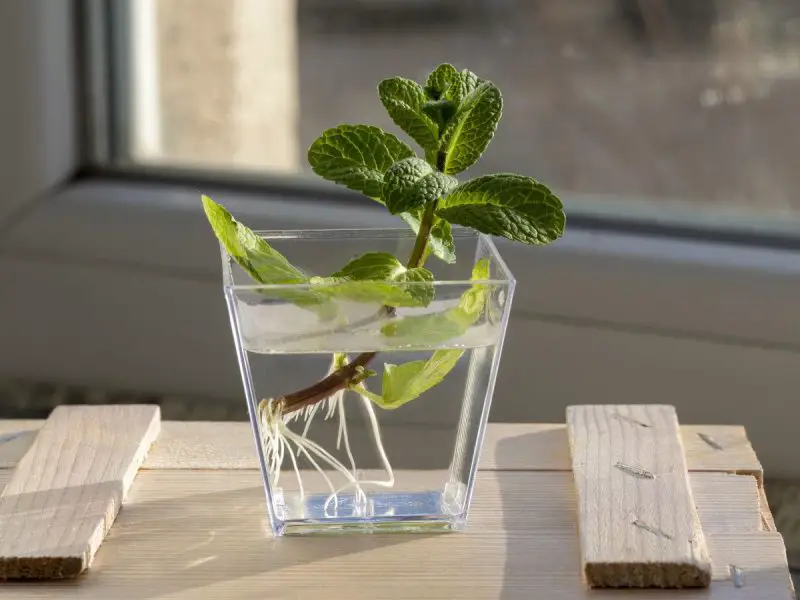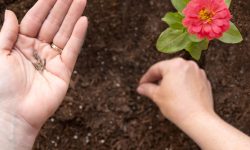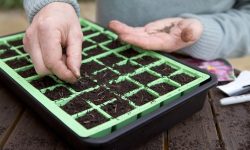Catmint is a versatile and fragrant perennial that brightens gardens with its lush foliage and long-lasting purple blooms. Its hardy nature makes it ideal for both beginner and experienced gardeners. Propagating catmint not only multiplies your plants but also ensures new growth inherits the vigor and resilience of healthy parent plants. With proper techniques, you can enjoy an abundant display of flowers and maintain a thriving, well-structured garden.
Successful propagation strengthens your garden’s overall health while allowing you to expand coverage efficiently. By selecting the right stems, timing your cuttings, and providing attentive care, gardeners can create new plants that establish quickly, resist disease, and bloom repeatedly. This guide provides detailed strategies to propagate catmint for long-term beauty and vitality.
Understanding Catmint and Its Growth Habits

Catmint grows as a compact, bushy perennial with aromatic foliage and vibrant purple flowers. Its natural mound shape makes it perfect for borders, rock gardens, and containers. The plant spreads moderately, forming dense clusters that deter weeds and attract pollinators like bees and butterflies. Understanding these habits helps gardeners propagate successfully by identifying the healthiest stems for cuttings.
The plant thrives in well-draining soil with full sun or partial shade. Although drought-tolerant once established, regular watering promotes more vigorous growth and denser foliage. Observing the plant’s seasonal patterns, including periods of active growth and flowering, is critical. Strong, flexible stems during these times make ideal candidates for propagation, ensuring the best chance for rooted cuttings to flourish.
Catmint’s flowering and dormancy cycles also influence propagation timing. Deadheading after bloom encourages fresh shoots, providing better material for cuttings. Selecting stems that are mature enough to root but not overly woody increases success rates. By understanding growth habits and observing plant health, gardeners can propagate catmint efficiently while maintaining lush, attractive plants in their gardens.
Choosing the Right Time for Propagation
Timing is one of the most critical factors for successful catmint propagation. The optimal period is during the plant’s active growth phase, typically in late spring or early summer. During this time, softwood stems are flexible, healthy, and more likely to develop roots quickly. Propagating too early in the season may involve stems that are not fully matured, while late-season attempts can result in weak or slow-growing plants. By choosing the right time, gardeners maximize the chances of producing strong, vigorous catmint that establishes quickly and thrives.
Environmental conditions also influence propagation success. Moderate temperatures combined with high humidity create ideal conditions for root development. Avoid extreme heat, frost, or overly dry periods, as these stress young cuttings and reduce survival rates. Gardeners can create favorable microenvironments by providing partial shade, using misting techniques, or covering cuttings with a transparent dome to maintain consistent moisture. Attention to seasonal weather patterns ensures that propagated catmint receives the best conditions to grow strong roots and healthy shoots.
Observing the parent plant is equally important. Stems selected for propagation should be healthy, disease-free, and flexible, with multiple leaf nodes for rooting. Regular monitoring of growth allows gardeners to identify when stems are ready for cutting. Following these guidelines, propagating at the right time not only improves success rates but also promotes long-term plant health and continuous flowering. By aligning propagation with the plant’s natural growth cycle, gardeners can enjoy a flourishing, vibrant catmint collection throughout the season.
Selecting Healthy Stems
Choosing the right stems is a crucial step for successful catmint propagation. Healthy stems are firm, flexible, and free of damage or disease. Avoid woody or brittle stems, as they are less likely to develop roots. Softwood or semi-hardwood stems taken during active growth are ideal for producing vigorous, long-lasting plants. Selecting robust stems ensures that new plants inherit the strength and vitality of the parent, promoting dense foliage and abundant blooms.
In addition to flexibility, stems should have multiple leaf nodes, as these are essential for root formation. Remove any damaged or yellowing leaves before taking cuttings to prevent rot and disease. Stems with well-developed nodes offer more opportunities for roots to emerge, which increases the success rate. Carefully inspecting stems before cutting also allows gardeners to avoid pest-infested sections, ensuring that propagated plants remain healthy and resilient from the start.
Proper stem selection influences the long-term growth and appearance of catmint. Cuttings from strong, disease-free stems produce fuller, bushier plants with a well-maintained mound shape. This careful choice reduces the risk of weak growth or leggy plants that may struggle to thrive. By prioritizing healthy stems, gardeners not only improve propagation success but also maintain a vibrant and attractive garden. Ultimately, thoughtful stem selection lays the foundation for robust catmint plants that provide beauty and fragrance for seasons to come.
Step-by-Step Propagation Guide
Preparing the Cuttings
Proper preparation is essential for successful catmint propagation. Begin by selecting healthy, flexible stems from the parent plant, ideally during active growth in spring or early summer. Cut 4–6 inch sections just below a leaf node to maximize rooting potential. Remove the lower leaves carefully, leaving only a few at the top. This reduces the risk of rot while allowing the cutting to continue photosynthesis. Clean, sharp pruning tools prevent damage and minimize stress on the plant.
Next, prepare the rooting medium. A light mix of perlite and peat moss works well for retaining moisture while providing adequate drainage. Moisten the medium before planting to create a hospitable environment for the cuttings. Place the cuttings in a shaded or indirect sunlight area to avoid excessive heat stress. Maintaining stable humidity around the cuttings encourages root initiation. With careful preparation, each cutting is more likely to develop a strong root system and establish successfully, ensuring the new plant will grow healthy and vigorous.
Rooting the Cuttings
Once the cuttings are prepared, insert them into the moist rooting medium, burying at least one leaf node. Firm the medium gently around the stem to prevent movement. Keep the cuttings in a warm, shaded location with indirect sunlight. High humidity promotes root development, which can be maintained using a clear plastic cover or dome to retain moisture. Avoid excessive direct light, which can cause wilting or stress.
Check the cuttings regularly to ensure the soil remains slightly damp but not waterlogged. Mist occasionally to maintain humidity without over-saturating the medium. Root formation generally occurs within two to four weeks, depending on temperature and environmental conditions. Handle cuttings carefully during this period to avoid damaging fragile stems and newly forming roots. Proper attention during the rooting stage increases survival rates and produces strong, healthy catmint ready for transplanting.
Transplanting Young Plants
After roots have developed, cuttings can be transplanted into pots or garden beds. Choose a location with well-draining soil and sufficient sunlight, preferably four to six hours per day. Gradually acclimate plants rooted indoors to outdoor conditions to prevent transplant shock. Avoid exposing young plants to harsh midday sun initially, as they are still adjusting to environmental changes.
Water the new plants thoroughly to settle the soil around the roots. Monitor the young catmint closely over the following weeks. Remove weak or damaged stems to encourage energy allocation toward healthy growth. Regular observation helps ensure the plant establishes a strong root system and maintains a compact, bushy shape. Proper transplanting and care allow propagated catmint to grow vigorously, develop dense foliage, and produce abundant flowers, enhancing the garden’s overall beauty.
Caring for Propagated Catmint
Newly propagated catmint requires careful attention to establish strong roots and healthy growth. Watering is crucial during the early stages; keep the soil consistently moist but avoid waterlogging, which can lead to root rot. Young plants are sensitive to fluctuations in moisture, so check the soil regularly and adjust watering accordingly. Light misting can help maintain humidity, particularly in dry environments, supporting root development and preventing leaves from wilting.
Sunlight and air circulation are equally important for healthy catmint. Place the plants in an area that receives four to six hours of direct or filtered sunlight daily. Adequate light ensures strong stem growth, vibrant foliage, and optimal flowering potential. Proper airflow around the plants reduces the risk of fungal infections and pests, which can be especially damaging to young, delicate cuttings. Avoid overcrowding by giving each plant enough space to thrive, allowing it to develop its natural mound shape.
Fertilization and routine observation further enhance the success of propagated catmint. Use a balanced, diluted fertilizer once roots are established to encourage robust foliage and flowering. Monitor for signs of stress, such as yellowing leaves or slow growth, and remove any damaged stems promptly. Regular care, including pruning spent flowers and thinning crowded areas, ensures that new plants remain vigorous and visually appealing. By combining proper watering, sunlight, airflow, and nutrition, propagated catmint will thrive and provide long-lasting beauty in the garden.
Using Fertilizers and Growth Enhancers for Young Catmint
Providing appropriate nutrition is essential for young catmint to develop strong roots, healthy foliage, and abundant blooms. Start by using a balanced, water-soluble fertilizer once roots are well-established, typically two to three weeks after propagation. A fertilizer with equal proportions of nitrogen, phosphorus, and potassium supports both leaf development and root growth. Applying too much nitrogen, however, can encourage excessive leafy growth at the expense of flowers, so it is important to follow recommended dosages carefully.
In addition to fertilizers, natural growth enhancers can improve the vigor of young plants. Adding a small amount of compost or well-rotted organic matter to the soil enriches nutrients and improves soil structure. Liquid seaweed extracts or diluted fish emulsion can also be used periodically to stimulate root development and enhance stress resistance. These natural boosters help young catmint adapt to transplanting, promote stronger stems, and encourage more consistent flowering throughout the season.
Regular monitoring of plant health is key when using fertilizers or growth enhancers. Observe leaves for signs of nutrient deficiency or over-fertilization, such as yellowing, browning, or curled edges. Adjust feeding schedules based on plant response and growth stage to avoid nutrient imbalances. Combining proper fertilization with adequate watering, light, and spacing ensures that propagated catmint thrives, establishing a robust, resilient foundation that will continue producing lush foliage and vibrant blooms for years to come.
Common Mistakes to Avoid
Overwatering Cuttings
Overwatering is one of the most common mistakes in catmint propagation. Excess water can cause roots to rot and cuttings to wilt, preventing successful establishment. Maintaining a balance is key: keep the soil consistently moist but ensure it drains well. Using a light, well-aerated rooting medium helps prevent waterlogging while allowing young roots to access oxygen.
Gardeners should check soil moisture regularly and adjust watering according to environmental conditions. Mist cuttings lightly to maintain humidity without saturating the soil. Monitoring water levels carefully ensures that cuttings stay hydrated, supporting healthy root formation and vigorous growth. Proper watering practices improve survival rates and result in strong, resilient catmint plants.
Using Weak or Diseased Stems
Selecting weak, damaged, or disease-affected stems greatly reduces propagation success. Cuttings taken from unhealthy stems are unlikely to root properly and often produce leggy, fragile growth that struggles to establish. Gardeners should focus on firm, flexible stems with vibrant green coloration and no signs of wilting, spots, or pest damage. Inspecting the parent plant carefully ensures that only the most robust stems are chosen, increasing the likelihood of strong, resilient new plants.
Overly woody or brittle stems should also be avoided, as they are slow to form roots and can easily break during handling. Using healthy, vigorous stems allows cuttings to develop roots faster and encourages strong early growth. Additionally, selecting disease-free material reduces the risk of transferring pathogens to the new plants. By prioritizing robust stems, gardeners create the foundation for propagated catmint to grow dense foliage, maintain its natural mound shape, and produce abundant seasonal blooms. This careful selection promotes long-term plant health, garden aesthetics, and the overall success of propagation efforts.
Ignoring Environmental Conditions
Propagation success depends heavily on proper environmental conditions, including light, temperature, and humidity. Exposing catmint cuttings to harsh sunlight, frost, or fluctuating temperatures can cause stress, wilting, or failure to root. Providing indirect sunlight and a stable, moderately warm environment allows cuttings to establish roots efficiently while minimizing shock. Gardeners should observe weather conditions and adjust the location of cuttings accordingly, especially during extreme heat or cold spells, to maintain optimal growth.
Humidity and airflow are equally crucial. Maintaining consistent moisture around the leaves helps prevent drying out while promoting root development. A misting system or transparent dome can create a humid microenvironment, reducing stress on young cuttings. At the same time, good air circulation is essential to prevent fungal infections and promote healthy foliage. Avoid overcrowding cuttings, as poor spacing can create damp, stagnant conditions that encourage mold or disease. Careful attention to these environmental factors significantly increases survival rates and ensures propagated catmint develops strong roots, dense foliage, and abundant blooms, producing healthy plants ready for long-term growth.
Neglecting Root Development
Transplanting catmint cuttings before roots are fully established is a frequent mistake that can hinder propagation success. Young plants moved prematurely often experience transplant shock, stunted growth, or even die. Roots must be well-developed, visible, and strong before transferring cuttings to soil or containers. Gardeners should allow sufficient time for root systems to form, ensuring that the plant can absorb nutrients effectively and anchor firmly in its new environment.
Regular monitoring of the rooting medium is essential to assess progress. Healthy, fully formed roots enable the cutting to thrive, support robust foliage, and maintain its natural mound shape. Patience during this stage also reduces stress on the plant and improves long-term resilience. By carefully nurturing root development, gardeners lay a solid foundation for vigorous growth, dense stems, and abundant flowering in mature catmint. Attention to this critical phase ensures that propagated plants are strong, visually appealing, and capable of long-term survival in the garden.
Overcrowding and Poor Spacing
Overcrowding cuttings is a common propagation mistake that can severely limit growth and overall plant health. When cuttings are placed too close together, airflow is restricted, light penetration decreases, and competition for water and nutrients increases. These conditions often result in weak, leggy stems, slower root development, and a higher likelihood of disease outbreaks. Ensuring proper spacing allows each cutting to access sufficient resources, promoting healthy roots, strong stems, and a robust foundation for future growth.
Adequate spacing also supports uniform foliage and abundant flowering. Crowded conditions can cause uneven moisture distribution, leaving some plants too dry while others remain too wet, further stressing young catmint. Providing enough room for each cutting encourages natural mound formation and helps the plants maintain their aesthetic appeal. By carefully planning spacing during propagation, gardeners not only enhance survival rates but also ensure long-term vigor, strong root systems, and vibrant blooms. Proper spacing is essential for cultivating dense, healthy, and visually attractive catmint that thrives throughout the season.
Troubleshooting Propagation Problems
Propagation can sometimes be challenging, and identifying problems early ensures success. One common issue is cuttings failing to root, which may result from using unhealthy stems, improper timing, or unsuitable environmental conditions. Gardeners should reassess their selection of stems, ensuring they are flexible, disease-free, and taken during active growth. Adjusting light, temperature, and humidity levels often resolves rooting problems, providing cuttings with the optimal conditions for success.
Another frequent problem is slow or uneven growth after roots form. This may be caused by inadequate nutrients, inconsistent watering, or overcrowding. Ensure that each cutting has enough space to grow and receives balanced nutrition once roots are established. Regular monitoring allows gardeners to correct deficiencies early. Applying a mild, balanced fertilizer promotes robust growth without overwhelming young plants. Consistent care, including proper moisture management and avoiding direct harsh sunlight, supports even development and prevents stunted or leggy stems.
Pest and disease issues can also affect propagation outcomes. Fungal infections, mold, or insect damage can occur if cuttings are kept too damp, overcrowded, or in poorly ventilated areas. Inspect cuttings regularly and remove any affected stems immediately. Good airflow, proper spacing, and moderate humidity prevent most common problems. By addressing these issues promptly and adjusting care practices, gardeners can troubleshoot effectively, ensuring propagated catmint develops strong roots, dense foliage, and abundant, healthy blooms throughout the growing season.
Benefits of Propagating Catmint
Propagating catmint offers numerous advantages for both novice and experienced gardeners. One of the main benefits is cost-effectiveness. By producing new plants from existing healthy stems, gardeners can expand their garden without purchasing additional plants. This allows for wider coverage, denser foliage, and more vibrant blooms while keeping expenses minimal. Propagation also enables gardeners to create uniform plants that match the size, shape, and flowering characteristics of the parent catmint.
Another key benefit is the preservation and enhancement of plant health. Propagating from strong, disease-free stems ensures that new plants inherit the resilience and vigor of the parent. This practice reduces the risk of introducing pests or diseases to the garden. Additionally, propagation allows gardeners to rejuvenate aging catmint plants, replacing weak or woody stems with new growth that produces abundant foliage and extended flowering periods. Regular propagation encourages a continuous cycle of healthy, productive plants throughout the garden.
Lastly, propagating catmint fosters garden diversity and sustainability. Gardeners can share cuttings with friends or community gardens, spreading the enjoyment of this fragrant, attractive perennial. Propagation also supports ecological benefits by providing more blooms that attract pollinators such as bees and butterflies. By producing multiple plants, gardeners can enhance the aesthetic appeal of outdoor spaces while promoting biodiversity. Ultimately, the practice of propagating catmint contributes to a healthier, more vibrant, and environmentally friendly garden that thrives season after season.
Overwintering Propagated Catmint
Successfully overwintering propagated catmint is essential to ensure strong growth and vibrant blooms in the following season. Young plants are particularly vulnerable to frost and cold temperatures, which can damage stems and roots. To protect them, cut back the foliage lightly before the first frost, leaving enough structure to shield the crown. For potted catmint, consider moving plants indoors or to a sheltered location where temperatures remain stable and above freezing. Proper preparation helps the plants conserve energy and survive harsh conditions.
Soil management is also critical during winter. Ensure the soil is well-draining to prevent waterlogging, which can lead to root rot in cold, damp conditions. Mulching around the base of the plant provides insulation, maintaining soil temperature and protecting the roots from freezing. Avoid overwatering during winter months; the goal is to keep the soil slightly moist but not saturated. Monitoring soil conditions and adjusting care based on temperature and rainfall helps young catmint endure the dormant period without stress.
Additionally, careful observation throughout winter promotes plant resilience. Remove any damaged or diseased leaves to prevent mold or pests from taking hold. For indoor overwintering, provide bright, indirect light to maintain basic photosynthesis without forcing growth. By combining proper pruning, soil care, and strategic placement, gardeners can successfully overwinter propagated catmint, ensuring it emerges healthy, vigorous, and ready to thrive in the spring season.
Encouraging Successive Flowering in Propagated Catmint
Achieving multiple blooming cycles in propagated catmint requires careful attention to pruning, feeding, and environmental conditions. Deadheading spent flowers promptly encourages the plant to redirect energy into producing new blooms instead of forming seeds. Focus on trimming only the flower spikes while leaving the main structural stems intact, preserving the plant’s natural mound shape. Regular observation ensures that faded blooms are removed in time, maintaining continuous color and vitality throughout the growing season.
Nutrient management also plays a key role in supporting successive flowering. Applying a balanced, water-soluble fertilizer after each bloom cycle replenishes essential nutrients and encourages vigorous regrowth. Organic supplements such as compost tea or diluted fish emulsion can provide additional micronutrients that strengthen stems and leaves. Adequate nutrition ensures the plant has the energy reserves needed to sustain multiple flowering phases, enhancing both the aesthetic appeal and overall health of catmint.
Light and airflow are equally important for prolonging bloom cycles. Place propagated catmint in a location that receives full to partial sunlight and ensure proper spacing between plants to improve air circulation. Adequate light stimulates flower bud formation, while good airflow reduces the risk of fungal disease and encourages robust, even growth. By combining timely deadheading, proper nutrition, and optimal environmental conditions, gardeners can enjoy successive waves of vibrant flowers, keeping their catmint healthy, attractive, and continuously blooming throughout the season.
FAQ About Propagating Catmint Plant
How long does it take for catmint cuttings to root?
Catmint cuttings usually develop roots within 2 to 4 weeks, depending on environmental conditions such as temperature, humidity, and light exposure. Using healthy stems and maintaining consistent moisture significantly improves rooting success.
Can catmint be propagated from woody stems?
Woody stems are less likely to root successfully. Softwood or semi-hardwood stems taken during active growth are ideal, as they are flexible, disease-free, and capable of producing vigorous new plants.
How often should I water propagated catmint cuttings?
Keep the rooting medium consistently moist but avoid waterlogging. Light misting helps maintain humidity while preventing fungal problems. Adjust watering based on temperature and soil moisture to promote healthy root growth.
What is the best time of year to propagate catmint?
Late spring to early summer is optimal. During this period, stems are actively growing, flexible, and more likely to root quickly. Avoid propagation during frost or extreme heat to reduce stress on cuttings.
How do I prevent disease in propagated catmint?
Ensure proper spacing, good airflow, and moderate humidity. Use clean tools, remove diseased or damaged stems, and monitor for fungal growth. Healthy stems and well-ventilated environments minimize disease risk.
Conclusion
Propagating catmint opens the door to a vibrant, fragrant garden filled with lush foliage and abundant blooms. By selecting healthy stems, providing the right environment, and practicing careful care, gardeners can nurture strong, resilient plants that thrive season after season. Avoiding common mistakes like overwatering, overcrowding, or premature transplanting ensures success and long-term plant health. With patience and attention, propagated catmint rewards you with continuous color, natural beauty, and a garden that attracts pollinators. This simple yet rewarding process allows every gardener to enjoy flourishing catmint for years to come.






